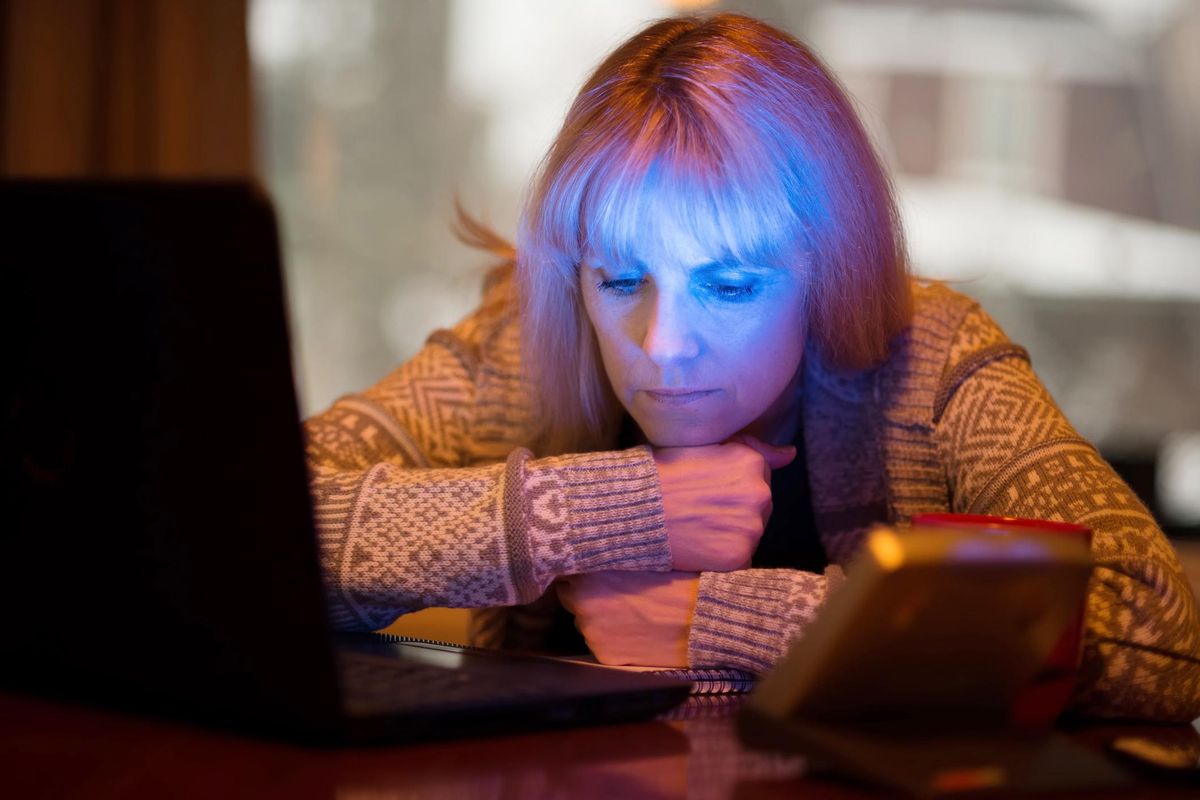If there's one thing you can count on, it's the disorder that hits many of us at this time of the year. Holiday festivities are behind us, and winter looms with its colder temperatures and shorter days with limited (if any) hours of sunlight.
Feeling sad? You're not alone. Seasonal affective disorder, or SAD, severely affects an estimated 14 million American adults, while 33 million feel some degree of it. Yet, it's infrequently treated.
SAD can make you feel like all you want to do is hibernate. It's real and recognized and even included in the diagnostic classification system of the Diagnostic and Statistical Manual for Mental Disorders, Fourth Edition.
More: How to Avoid Seasonal Depression This Fall and Winter
Every winter, it hits me. I'm so tempted to stay in bed with my warmest PJs, blanket pulled over my head, with a blaring message to all: Stay Away and Wake Me When It's Over! It's no wonder that some experts refer to SAD as a form of hibernation.
My cheeriness, creativity, energy and productivity take a nosedive, while my irritability, fatigue and sense of hopelessness climb to frightening heights. It takes all my willpower not to succumb—and I have to admit, it's a real challenge. Though it's not exactly an emotional response to sadness that I'm feeling, it's a sense of running on empty or low batteries.
Other people find that SAD makes them crave carbohydrates and, thus, gain weight.
SAD and Jet Lag: A Connection?
Some scientists and researchers liken SAD to a form of jet lag, meaning it is a disturbance in the circadian rhythm (the 24-hour pattern that is responsible for the sleep-wake cycle and coordinating it with all other bodily rhythms). Dr. Alfred J. Lewy is a psychiatrist who has been studying the biology behind SAD. He suggests that later sunrise and earlier sunset of fall and wintertime can make people with SAD feel as if they had traveled across many time zones, as their rhythms with the sleep-wake cycle become out of sync. But unlike jet lag, which can be remedied within a few days, SAD can take a good five months to resolve. Researchers are hoping to someday be able to treat SAD with melatonin, but for now, there is no commercial source of time-release low-dose melatonin that can be used.
Treatments
Most commonly, SAD is treated with exposure to high-intensity artificial light for up to several hours a day to simulate the longer days of summer (when people with SAD function at their best). I've used a number of the devices and always found it difficult to sit with a desktop-type light shining into my eyes for so long.
Right now, I'm trying something new, recommended by my MD, who, thankfully, likes to think outside the box. FeelBrightLight (www.feelbrightlight.com) is a small, portable light box that fits under the brim of most hats or visors. Giving off either 12,000 or 8,000 lux, this hi-intensity rechargeable light shines into your eyes without interfering with your visual field and shuts off automatically after 30 minutes. (Note: Some people might need larger lights and longer exposure times.) I recently started wearing the visor and light each morning and am hoping for a shift in my mood very soon!
The Center for Environmental Therapeutics offers more information about SAD and some therapeutic tools at its website, www.cet.org.
Among other therapies (some realistic, others not so much):
- Use a "dawn simulator," a device that gradually turns on a bedroom light every morning while you're still asleep, to make the body think it's experiencing the early sunrises of summer.
- Take a winter vacation to a sunny climate.
- Move closer to the equator.
- Try a negative-ion generator, a machine that emits negative ions at a high rate, which can be used while sleeping.
- Undergo cognitive behavioral therapy. This short-term form of psychotherapy helps people change negative thoughts and behaviors and was found in studies to be as effective as light therapy in some people.
- Exercise. And get plenty of it. You may not feel like doing it, but it can "wake" you out of a slump and give you more energy with the extra oxygen it pumps into your brain.
- Let the light in. Get out into the sunlight as much as you can. When inside, open your shades to let the light shine in.
- Socialize. Again, you may not feel like doing it, but being lonely only exaggerates the symptoms of SAD. Push yourself to go out or at least reach out to friends and family by telephone or social media.
- Watch your diet. Eatright.org suggests adding foods rich in folate and/or vitamin B12 to your diet (such as fortified whole-grain breakfast cereals, lentils, oatmeal, beets, shellfish, wild salmon and low-fat dairy and eggs). Folate and vitamin B12 may influence mood by playing a role in serotonin production, they say.







